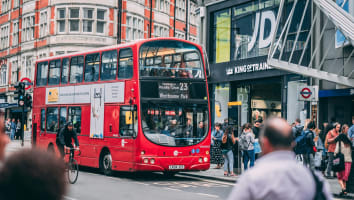
Blackwell’s and the book buying experience
A well-stocked bookshop, with the scent of new paper and an adventure on every shelf, has been a staple of the British high street for hundreds of years.
9th September 2019 • Market Visits

The average shopper in 2019 buys 9 physical books a year, and 34% would categorise themselves as a “heavy reader”. Why is it then that independent bookshops have seen a dramatic fall in numbers, from nearly two thousand in 1995 down to less than a thousand in 2016? Conversely, retailers like Blackwell’s have enjoyed a recent boom, their choice to expand outside of university campuses into shopping centres and larger commercial areas contributing to their 17% increase in sales in 2018. So, what is it that stores like Blackwell’s are doing differently that has kept readers new and old coming through their doors?
Growing up in a home with a bookshelf on every wall, a tradition I’ve brought with me into my adult life, the pilgrimage to the local bookshop has always been an exciting affair. For me this was often to Blackwell’s 140-year-old flagship on Broad Street, Oxford. This four-storey establishment features a Caffè Nero, a dedicated Rare Books department, and the Norrington Room: currently holding the Guinness World Record for the largest display of books for sale in one space. They often host events: alongside the usual fare of signings, seminars and book launches, a local theatre company performs Shakespeare and Marlowe in the round among the stacks. These occasions help build a visit into more than a mere commercial exchange; it becomes an experience in its own right, something that no amount of online deliveries or e-book downloads can replicate.
Blackwell’s currently sits at 37 stores, over 30 of which are confined to University campuses, including their recent openings in Manchester (20th Feb) and Belfast (8th Apr). They have however been experimenting with a different format, moving away from an academic focus towards pure trade. An example of this is the Westgate Shopping Centre store in Oxford, which opened in 2017, coinciding with a 20% increase in general (compared to academic) book sales less than a year later.
Blackwell’s are also an Ordnance Survey Partner, producing high quality maps for use in planning permission applications, amongst other things. They’ve tied this in interestingly with their historical map archive, giving them a unique insight into the past, present and future of geographical datasets.
In general, it seems like hosting events and having other forms of income are crucial to the continued survival of brick and mortar bookshops like Blackwell’s, supplements which many independent bookshops may not have the flexibility to emulate. Whatever the future holds, I’m going to keep buying books in person, hoping one day to fill up every shelf. With every book will come a story, not just within their pages, but of how I found them, chose them, and took them home.

Related Posts
-

Danish Design and Hygge Homeware - variety store trends in the UK
Josh reviews the grand opening of Søstrene Grene in Leeds along with other Danish brands taking the UK by storm. Who could be next?
Published 17th March 2025 • Tags market-visits
-

Oxford Street Reinvented
Ben recently took to Oxford Street to ask the question "can it make sense to have 4 stores in the same vicinity, no matter how strong that Retail Place is?"
Published 14th August 2024 • Tags market-visits, geodata
-

Debenhams: Two years (& two months on)
Over two years since the physical presence of Debenhams on our high streets ended, we review 126 units they left vacant. What’s become of them?
Published 2nd August 2023 • Tags market-visits, geodata